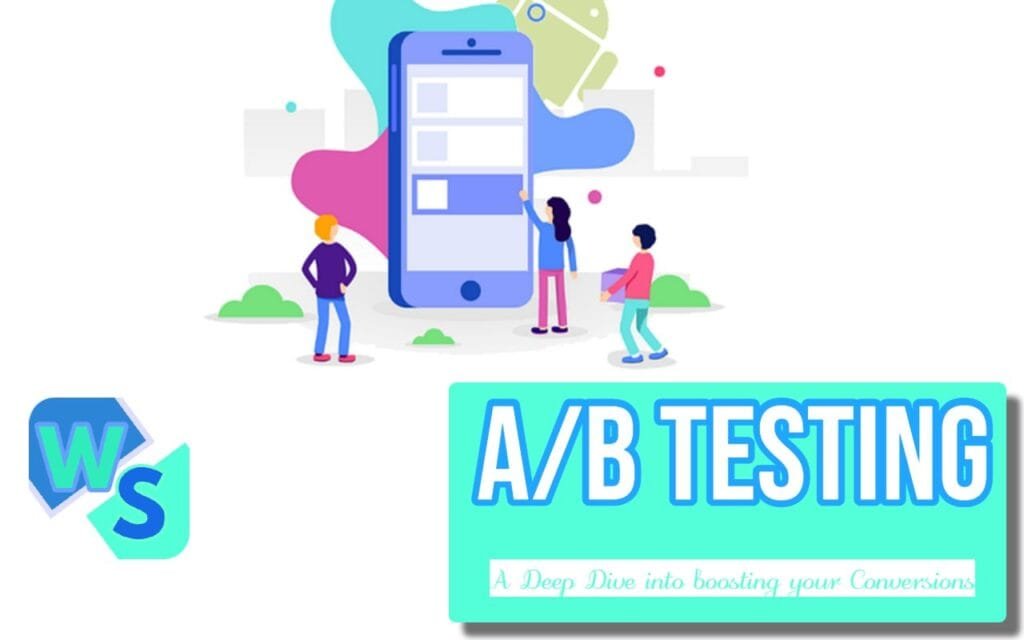Traditional Marketing Strategies
Understanding Traditional Marketing
Traditional marketing encompasses conventional promotion methods that have been used for years to reach audiences effectively. This includes strategies such as television advertisements, radio spots, print media, direct mail, and outdoor promotions like billboards. Despite the rise of digital technologies, traditional marketing holds a significant place in the marketing landscape due to its established credibility and the trust it fosters with consumers.
In many cases, traditional marketing can provide a tangible presence that digital campaigns may lack. This presence not only helps in creating brand awareness but also allows businesses to communicate directly with their target audience in a meaningful way.
Importance in the Digital Age
In today’s digital-first environment, the importance of traditional marketing remains undeniable. As brands navigate the complexities of consumer behavior, integrating traditional channels with digital efforts can amplify marketing effectiveness. Traditional marketing channels still provide enduring value by maintaining a strong connection with local communities and audiences. Through mediums such as television, billboards, and radio, businesses can build credibility, enhance brand identity, and break through the digital noise that often overwhelms consumers.
The dual approach of employing both traditional and digital marketing strategies enables businesses to reach a wider audience and gather valuable data-driven insights. For instance, traditional marketing facilitates trust-building, which is crucial for influencing consumer decisions. Trust plays a pivotal role in consumer behavior, particularly when local interactions enhance brand loyalty.
| Aspect | Traditional Marketing | Digital Marketing |
|---|---|---|
| Tangibility | Yes | No |
| Trust Factor | High | Variable |
| Audience Reach | Local and Broad | Global |
| Data Insights | Limited | Extensive |
Integrating both traditional and digital marketing channels can yield a more effective marketing strategy. By leveraging traditional channels alongside digital platforms such as email marketing and social media, you can create cohesive campaigns that enhance brand consistency and optimize resource allocation for better marketing outcomes (Hawke Media).
Understanding the role of traditional marketing in the current landscape allows for informed decision-making and strategic planning. To delve deeper, you can explore various traditional marketing methods and their effectiveness in building a comprehensive marketing approach.
Benefits of Traditional Marketing
Tangible Presence
Traditional marketing offers a tangible presence that often resonates deeply with consumers. This approach utilizes various mediums such as television, billboards, print materials, and radio, which play a significant role in building trust. These formats are frequently regarded as “local” sources of information, establishing a sense of familiarity and reliability among audiences (Forbes).
The physical nature of traditional marketing enables brands to create lasting impressions. When consumers encounter advertisements in their everyday environment, such as billboards during their commute or direct mail flyers at home, they are often more likely to remember the brand and its messaging. This lasting impact is crucial for reinforcing brand identity and recognition.
| Traditional Marketing Medium | Benefits |
|---|---|
| Television | Builds broad awareness, effective storytelling |
| Billboards | High visibility, captures attention in key locations |
| Print Magazines | Targets niche audiences, builds trust in specific sectors |
| Radio | Accessible, creates awareness during daily routines |
Sensory Experiences
Sensory experiences are another essential benefit of traditional marketing. Engaging multiple senses can evoke emotions and foster a stronger connection between the consumer and the brand. For example, print advertisements allow readers to physically handle the material, creating a tactile interaction that digital formats cannot replicate. This sensory engagement can enhance the consumer’s understanding and feelings toward the brand (Hawke Media).
Moreover, traditional channels can leverage sound and sight effectively. Television and radio advertising can utilize music and sound effects to resonate emotionally with audiences, while visual advertising, such as billboards, utilizes colors and imagery that can influence consumer perception and memory retention.
| Sensory Engagement | Marketing Medium | Example |
|---|---|---|
| Visual | Billboards | Bright colors and bold visuals to catch attention |
| Auditory | Radio | Catchy jingles that stick in listeners’ minds |
| Tactile | Premium paper quality that conveys luxuriousness |
In summary, the enduring value of traditional marketing lies in its ability to provide both a tangible presence and memorable sensory experiences. The significance of these components in building consumer trust should not be underestimated, especially in an age where digital mediums dominate much of the marketing landscape. For a deeper understanding of traditional marketing strategies, embrace the benefits of these proven methods and integrate them into your marketing mix.
Integrating Traditional and Digital Marketing
Integrating traditional and digital marketing strategies is essential for modern businesses seeking to maximize their outreach and engagement. By combining these approaches, you can create a more robust marketing framework that leverages the strengths of both realms.
Complementary Approaches
Utilizing traditional marketing methods alongside contemporary digital channels can significantly amplify your marketing efforts. Traditional strategies, such as print advertising and television commercials, can create a tangible presence that enhances brand recognition. When these methods are paired with digital techniques like social media marketing and email campaigns, you can reach a broader audience and create more effective marketing campaigns.
All-in-one marketing strategies enhance the perception of your brand through varied touchpoints. For example, a TV advertisement may direct viewers to a corresponding social media page or a specific website, thus creating a seamless transition between marketing channels. According to Hawke Media, “businesses can combine traditional channels like print, TV, and radio with digital channels such as email marketing, social media, SEO, and paid ads.” This integrative approach ensures a well-rounded outreach strategy.
| Marketing Type | Definition | Example |
|---|---|---|
| Traditional Marketing | Channels that have been used for decades, focusing on a broad audience | Print ads, TV commercials |
| Digital Marketing | Focused on interactive platforms, targeting specific audience segments | Social media ads, email marketing |
Enhancing Brand Consistency
Establishing brand consistency across both traditional and digital platforms is crucial in reinforcing your identity and message. When your marketing strategies align, consumers receive coherent information about your brand, which builds trust and recognition. Discrepancies in messaging can confuse your audience and dilute your brand’s impact.
You can achieve brand consistency by ensuring that logos, taglines, and overall aesthetics are uniform across all marketing channels. Moreover, integrating traditional communication methods with digital insights allows you to optimize your campaigns effectively. For instance, gathering data from digital channels can inform decisions on print materials or promotional events (Hawke Media).
With over 90% of marketers leveraging multiple marketing channels, as noted by HubSpot, it is vital to create a cohesive strategy that ensures a unified message. Aim for a harmonious blend where traditional and digital elements complement each other, ultimately enhancing the overall effectiveness of your marketing efforts.
In sum, integrating traditional and digital marketing not only broadens your reach but also fortifies your brand consistency, allowing you to stay adaptable in a constantly evolving marketplace. For a deeper understanding, explore our resources on traditional marketing strategies and traditional marketing channels.
Reaching Audiences
Effectively reaching audiences is a fundamental aspect of marketing strategy, particularly when considering traditional marketing trends. Understanding how to utilize precision targeting and real-time analytics can enhance your marketing efforts and ensure that your message resonates with your intended audience.
Precision Targeting
Precision targeting enables you to focus your efforts on specific demographics, increasing the likelihood of your marketing messages being received positively. By combining traditional marketing methods with data-driven insights, you can identify and engage your target market more effectively. For example, local radio stations or newspapers allow for geographic precision while delivering tailored messages to specific audience groups.
When developing traditional marketing campaigns, consider utilizing customer data to refine your targeting approach. This may involve using market research or analyzing historical campaign performance to understand which segments yield the best results. Integrating your traditional strategies with digital marketing can further enhance your targeting capabilities. You can track campaigns across various channels and adjust your strategies based on the efficacy of different outreach methods. For a deeper dive into various approaches, refer to our explanations of traditional marketing methods and traditional marketing strategies.
| Targeting Method | Description |
|---|---|
| Demographic Targeting | Target audiences based on characteristics like age, gender, and income. |
| Geographic Targeting | Focus on specific regions or locations for localized marketing efforts. |
| Psychographic Targeting | Understand audience preferences and interests to create tailored messages. |
Real-Time Analytics
Incorporating real-time analytics into your marketing strategy allows you to gauge the response to your campaigns almost immediately. This capability is crucial for adapting your tactics and making informed decisions based on audience behavior and preferences.
While traditional marketing tends to focus on broader audience insights, integrating it with digital analytics tools enables you to monitor the effectiveness of your advertising in real-time. For example, you can analyze the performance of print advertisements or radio spots through codes or unique URLs that track engagement and conversions. Gathering and evaluating this data can lead to enhanced campaign effectiveness, resource allocation, and budget optimization. As reported, businesses using both digital and traditional tools can ensure they reach prospects at all stages of the customer journey, ultimately leading to an anticipated increase in digital marketing revenue to more than $870 billion by 2027 (Business.com).
Utilizing real-time analytics means you can refine your marketing strategies on the go. Whether it’s assessing the latest billboard performance or evaluating responses to direct mail campaigns, immediate feedback allows for swift adjustments that maximize impact. For more insights on various marketing tactics, check out our resources on traditional marketing techniques and traditional marketing channels.
Enhancing Engagement
Enhancing engagement is a pivotal aspect of any marketing strategy, especially when navigating the balance between traditional and digital marketing trends. This section focuses on two key elements: brand awareness and immediate interaction.
Brand Awareness
Traditional marketing methods are essential for building strong brand awareness. By utilizing channels such as print advertising, television commercials, and radio promotions, businesses can create a tangible presence that resonates with consumers. These traditional marketing channels have enduring value as they deliver sensory experiences, which can have a lasting impact on consumer perception.
A robust awareness campaign may involve a mix of visual and auditory elements designed to capture attention and foster recognition. For example, a well-placed television ad can introduce your brand to a broader audience, while print materials can reinforce this message through repeated exposure. This multi-tiered approach not only enhances recognition but also lays the groundwork for consumer trust and loyalty.
| Marketing Channel | Engagement Type | Typical Reach |
|---|---|---|
| Television Ads | Visual + Auditory Awareness | High |
| Print Advertisements | Visual Recognition + Physical Interaction | Moderate |
| Radio Promotions | Auditory Awareness | Moderate |
By integrating traditional marketing channels with digital efforts, such as social media campaigns and online content marketing, you can create a complementary strategy that amplifies brand awareness and fosters customer engagement.
Immediate Interaction
In contrast, digital marketing enables immediate interaction, allowing consumers to engage with your brand in real-time. This dynamic creates opportunities for two-way communication, which is increasingly expected by consumers today. While traditional marketing lays the foundation for brand recognition, digital platforms provide channels for consumers to respond directly.
Tools like social media, email marketing, and online chat functions allow businesses to engage quickly and personally with their audience. The combination of immediate feedback from consumers can enhance your overall marketing strategy and facilitate a deeper connection with your brand. This instant engagement is crucial for driving response rates and ensuring that your audience is not just passive recipients of information but active participants.
Implementing strategies that encourage immediate interaction, such as promotional offers shared via social media or interactive webinars, can significantly boost engagement levels. Businesses that successfully integrate traditional marketing methods with digital techniques often benefit from the best of both worlds: establishing strong brand awareness while also responding to market feedback promptly.
| Interaction Type | Channel Examples | Engagement Speed |
|---|---|---|
| Social Media Engagement | Facebook, Instagram, Twitter | Immediate |
| Email Responses | Targeted Newsletters | Within Hours |
| Live Chat Services | Website Chat Functions | Instantaneous |
For a comprehensive approach to engaging your audience more effectively, consider exploring our resources on traditional marketing techniques and how they can be harmonized with digital strategies.
Data-Driven Insights
In the evolving landscape of marketing, leveraging data-driven insights is essential for refining strategies and enhancing effectiveness. Understanding consumer behavior and conducting ROI analysis play pivotal roles in adapting to traditional marketing trends.
Consumer Behavior
Analyzing consumer behavior through data allows you to make informed decisions that align with your target audience’s preferences. Integrating data from both traditional sources such as coupon redemptions and phone call tracking, alongside digital metrics like website analytics and email campaign performance, enables a comprehensive understanding of consumer interactions with your brand (Hawke Media).
The insights garnered through this approach can highlight trends and patterns in consumer preferences, guiding modifications to marketing strategies. For instance:
| Behavior Metric | Traditional Source | Digital Source |
|---|---|---|
| Coupon Redemptions | X% increase in usage | N/A |
| Phone Call Tracking | X% increase in inquiries | N/A |
| Website Visits | N/A | X% increase following a campaign |
| Email Opens | N/A | X% engagement rate |
Such data not only reveals which campaigns are resonating but also helps tailor future marketing efforts.
ROI Analysis
Return on investment (ROI) analysis is critical in evaluating the effectiveness of your marketing strategies. Combining traditional marketing metrics with digital performance data allows you to determine the financial impact of your campaigns. This multifaceted approach offers a clearer picture of where to allocate resources effectively.
By observing the interplay between traditional and digital channels, businesses can track their ROI more accurately. For example, a campaign leveraging print advertising alongside targeted digital ads may reveal:
| Campaign Element | Investment | Returns | ROI |
|---|---|---|---|
| Print Ads | $X | $Y | (Y-X)/X |
| Social Media Ads | $X | $Y | (Y-X)/X |
| Email Marketing | $X | $Y | (Y-X)/X |
Employing a unified strategy that integrates insights from both realms not only maximizes reach but also enhances resource allocation across marketing efforts (Hawke Media). This is especially vital in a marketplace where traditional marketing channels are increasingly integrated with emerging digital platforms.
By harnessing data to understand consumer behavior and analyzing ROI, you can navigate the complexities of traditional marketing trends and position your business for sustainable growth. Consider further exploring traditional marketing methods and traditional marketing statistics to deepen your understanding of this essential component of your marketing strategy.
Top Marketing Channels
Understanding the current landscape of marketing channels is critical to effectively navigating traditional marketing trends. Two key areas that have demonstrated notable growth and engagement are short-form video and influencer marketing.
Short-Form Video
Short-form video content has emerged as a powerful tool in both B2B and B2C marketing strategies. In 2023, approximately 29% of marketing professionals plan to leverage video marketing for the first time, showcasing its rising importance in modern marketing (HubSpot). Short videos not only capture attention quickly but also enhance consumer engagement by providing information in an easily digestible format.
The significant shift towards short-form video has also led to an increased budget allocation among marketers, as 41% of B2B marketers are now investing more in new channels, including video marketing (HubSpot). Leveraging platforms such as TikTok, Instagram Reels, and YouTube Shorts can effectively enhance your brand’s visibility and connect with audiences on a personal level.
| Year | Percentage of Marketers Using Short-Form Video |
|---|---|
| 2022 | 15% |
| 2023 | 29% |
Influencer Marketing
Influencer marketing has also become a prominent channel for traditional marketing strategies, capable of generating significant brand awareness. It boasts an average return on investment (ROI) of $5.78 for every dollar spent, making it an attractive option for many marketers. Notably, 17% of marketers are planning to experiment with influencer marketing for the first time this year (HubSpot).
By collaborating with social media influencers, businesses gain access to established audiences that can trust and relate to the influencer’s recommendations. This approach not only enhances visibility but also builds credibility and encourages consumer engagement. As the affiliate marketing industry continues to grow—estimated at $13 billion in 2023—it is clear that influencer marketing holds significant potential for your marketing endeavors (SNHU Newsroom).
| Metric | Value |
|---|---|
| Average ROI for Influencer Marketing | $5.78 per dollar spent |
| Influencer Marketing Industry Value | $13 billion in 2023 |
When considering your marketing strategy, integrating both short-form video and influencer marketing can provide robust engagement and connection with your target audiences. For a deeper understanding of these channels, exploring the fundamentals of traditional marketing channels can bolster your overall marketing strategy.
Omnichannel Marketing
In today’s rapidly evolving market landscape, implementing an effective omnichannel marketing strategy is essential for your business. This approach ensures seamless integration across multiple marketing channels, allowing you to reach your target audience more effectively and adapt swiftly to market changes.
Leveraging Multiple Channels
Integrating both traditional and digital marketing channels is crucial to amplify your marketing efforts. Utilizing a blend of print, TV, radio, and digital platforms, such as email marketing, social media, SEO, and paid advertisements, can help create cohesive marketing campaigns. This integrated approach not only enhances brand consistency but also helps you reach a wider audience (Hawke Media).
| Marketing Channel | Percentage of Marketers Using |
|---|---|
| More than one channel | 90% |
| More than three channels | 81% |
The ability to engage customers through various formats allows your brand to create touchpoints that resonate with different audience segments.
Adapting to Market Changes
Remaining adaptable is crucial in a dynamic marketplace. To stay responsive to shifting trends and consumer preferences, you must continuously analyze the effectiveness of your marketing efforts. Utilizing precise targeting, real-time analytics, cost-effectiveness, and the ability to track campaign performance are significant benefits of combining traditional and digital marketing channels (Hawke Media). This will enable you to refine your strategies, maximize reach, and enhance your overall impact.
Integrating these marketing channels not only facilitates greater engagement but also allows for immediate interaction and response from your audience. Traditional marketing can create initial brand awareness while digital channels foster two-way communication, driving higher response rates (Hawke Media).
Gathering comprehensive data from both methods will provide insights into consumer behavior, campaign performance, and return on investment (ROI). Such information equips you to make informed decisions, optimize your marketing strategies, and allocate resources effectively, enhancing your marketing effectiveness (Hawke Media).
By adopting an omnichannel approach, you position your business to navigate traditional marketing trends more effectively, ensuring your message reaches your audience with clarity and precision.





















